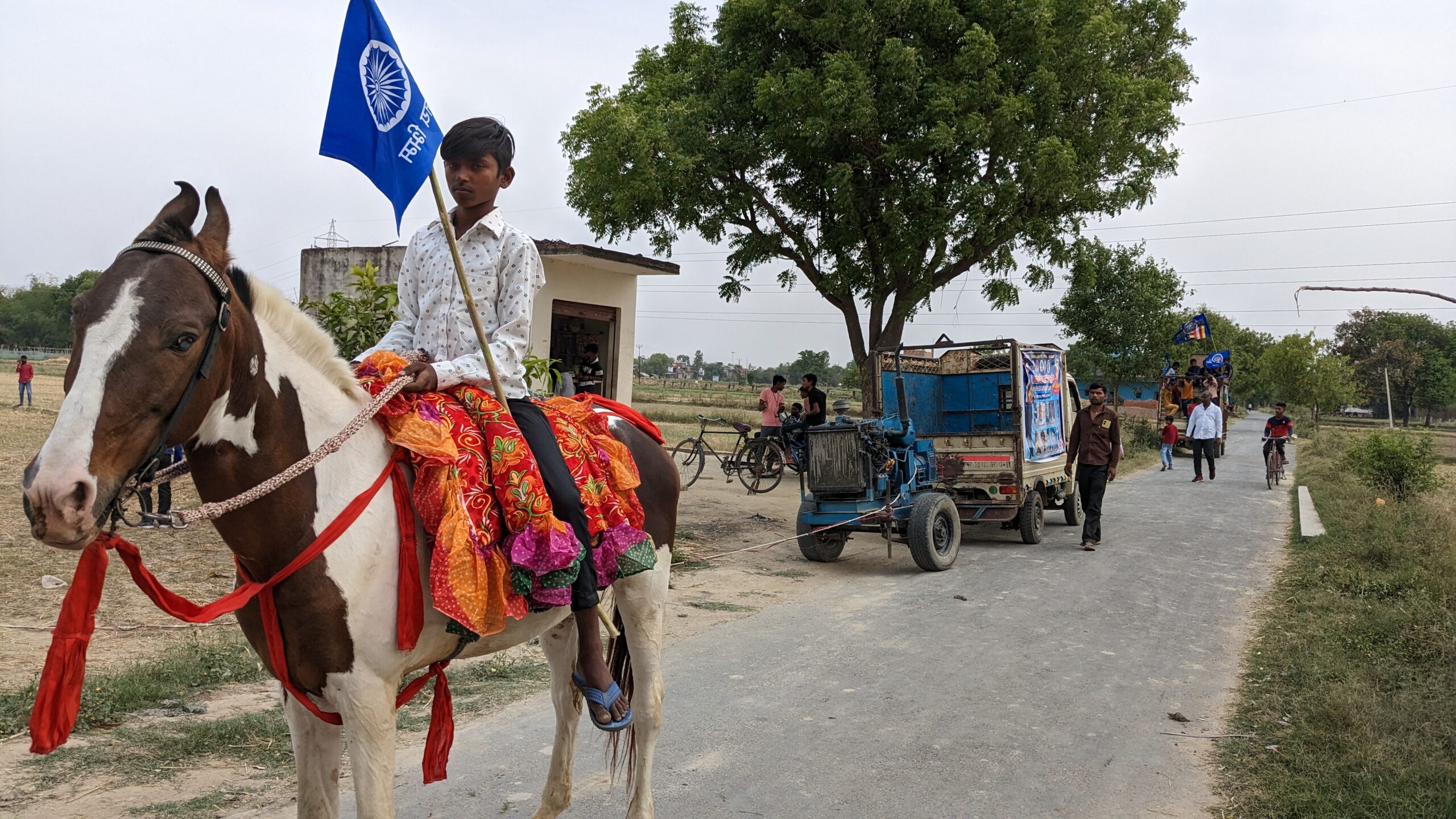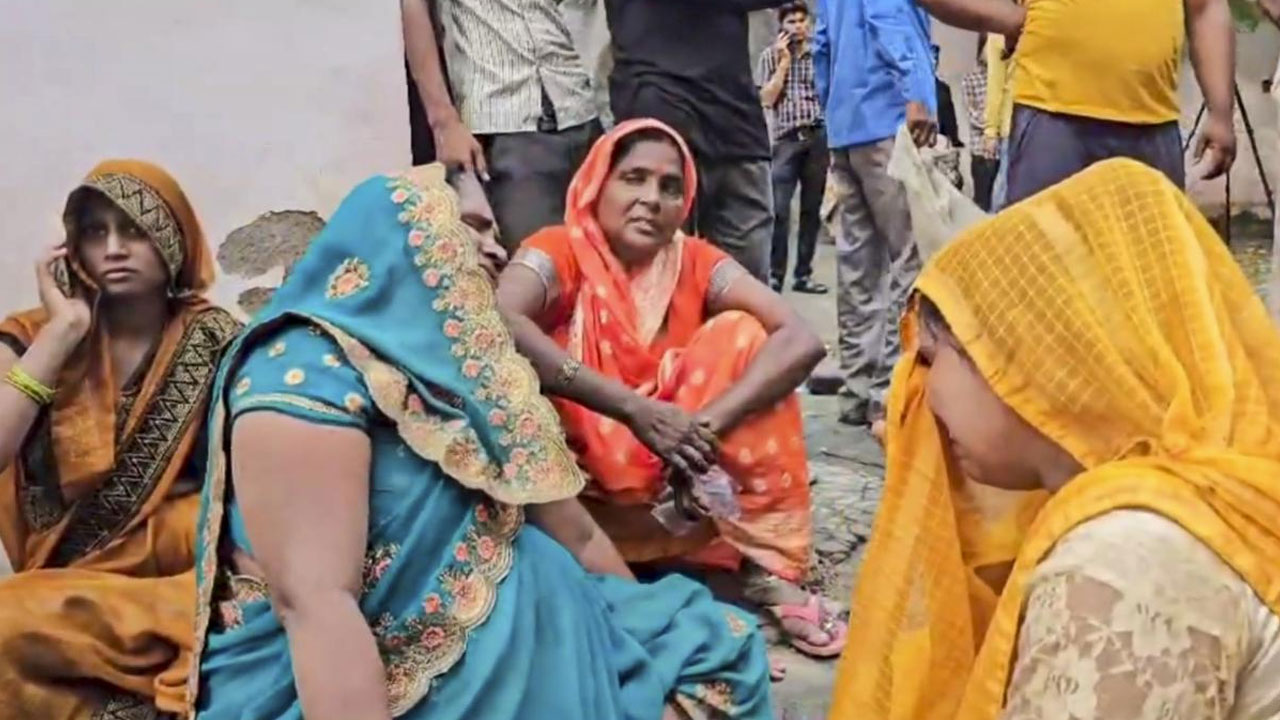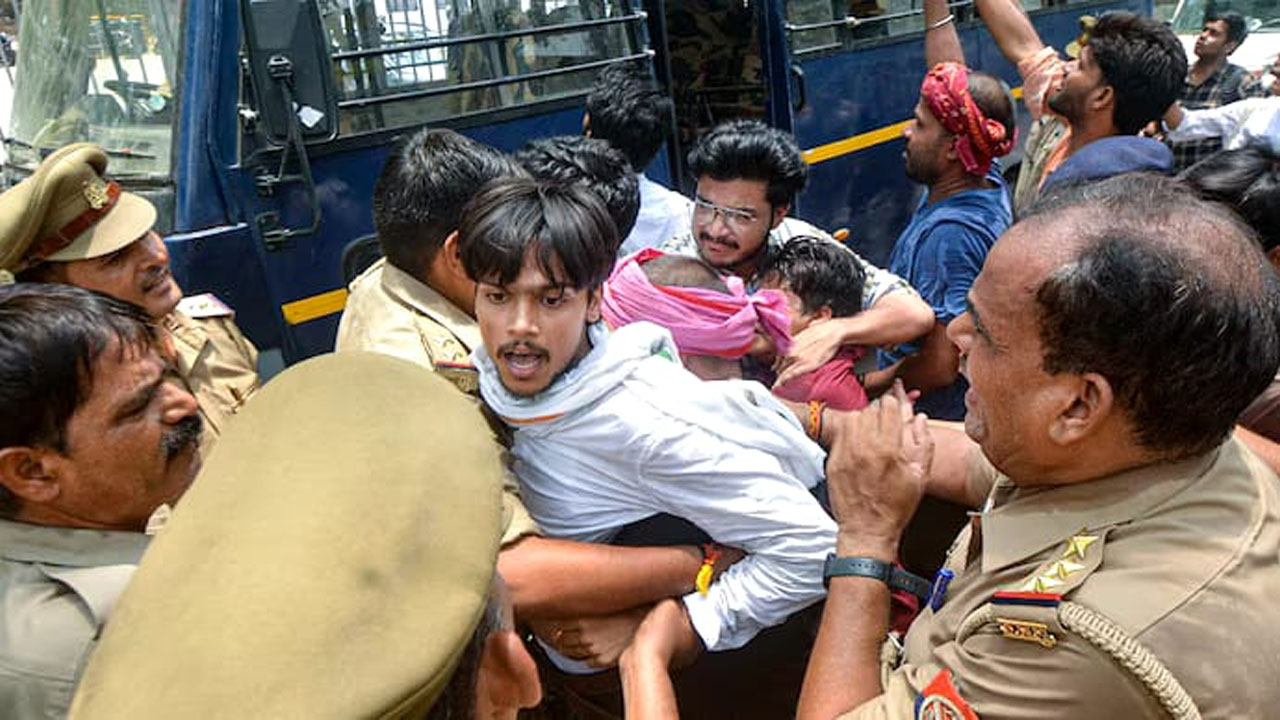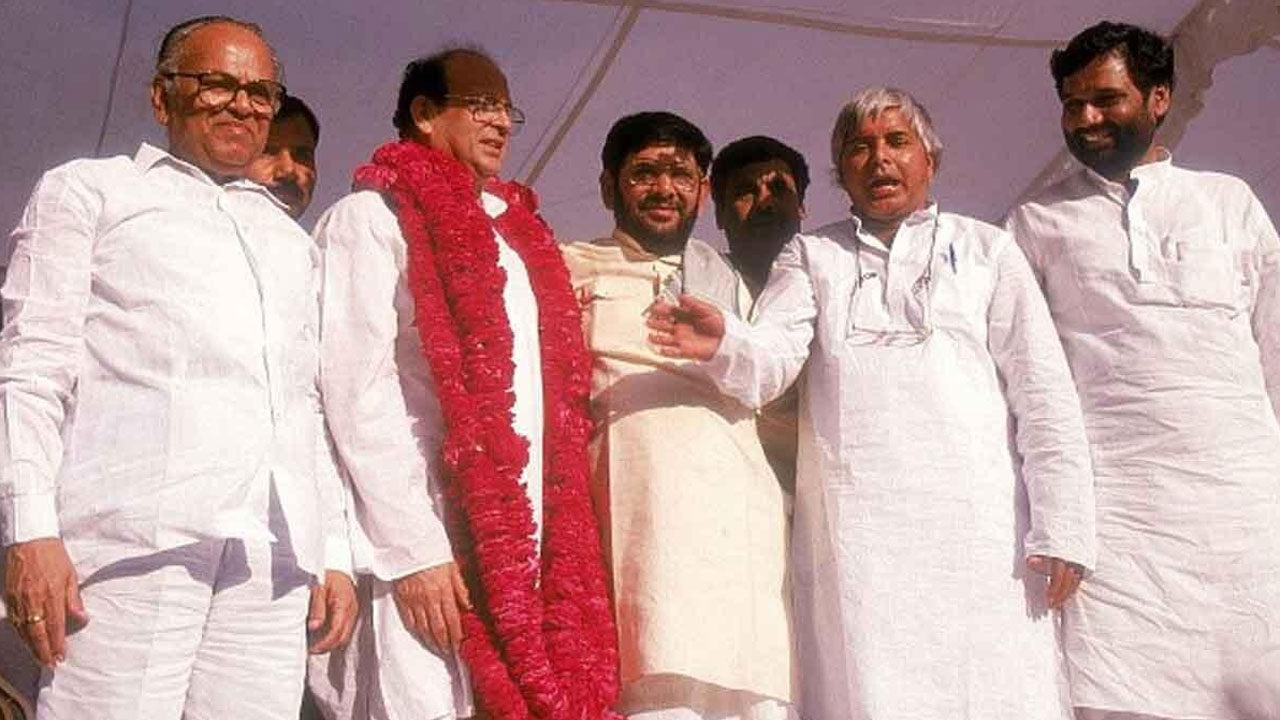Dr Ambedkar’s birth anniversary was celebrated all over the country on 14 April 2023. This was an occasion of great joy for the Dalitbahujan in villages like Pali, Chakmali and Bigahia in the Phulpur tehsil of Prayagraj district in eastern Uttar Pradesh. To mark the occasion, tableaux, accompanied by massive sound systems, formed part of the celebrations. Preparations for the occasion were being made for many days. This is the season of harvesting and threshing. But the Dalitbahujan did not touch their sickles and other tools for a day. The Dalitbahujan labourers had informed their employers in advance that they wouldn’t be reporting for work as they would be celebrating the birth anniversary of Babasaheb. Thus work of harvesting and threshing came to a complete halt in the fields and the barns.
Since most of the Dalitbahujan habitations are not connected by pucca roads, the people marched through the fields, with DJs playing music. The processions started from different villages and converged on Babuganj Bazar.
The men were sporting blue tilaks on their foreheads while the women had smeared their cheeks with blue gulal as a symbol of their respect and love for Ambedkarism. Teenage boys riding horses were carrying blue flags, painted with the Dhamma Chakra and Jai Bhim written below it. It seemed as if the Dalitbahujans had managed to break free from the shackles of Brahmanism and feudalism.
However, it was disappointing to see the financially independent Dalitbahujan farm labourer women walking with their faces veiled. Are they still the prisoners of a patriarchal mindset? Still, it was heartening to see them marching, with their little ones perched on their waists or their shoulders. Little children sporting T-shirts emblazoned with Ambedkar’s sketch and holding blue flags in their hands were also part of the procession. They formed a separate group, alongside the groups of men, women and the youth. Some youngsters were dancing atop the roof of cars and the vehicle carting the sound systems. The elderly formed the rear of the procession, trudging slowly with the aid of their walking sticks. They were mumbling that the music blaring from the speakers was ear-splitting.
Instead of the Dalitbahujan heroes and heroines, Bhim Army chief Chandrashekhar Azad was looking down from almost all the banners. BSP chief Mayawati was conspicuous by her absence.

The processions that began from Pali, Datayipura, Fazilapur, Chakmali, Bighiya, Fatehganj, Taardeeh, Tatihara, Aata, Narayi, Poore Bhulai, Beerkaji, Chirora, Kanauja, Manshi Khurd and other villages converged at Babuganj. The mercury was touching 40 degrees Celsius and the sun was raining fire. Yet, the processions from different villages, with tableaux and the villagers dancing and singing to the tunes being played, reached Babuganj on the national highway that connects Allahabad with Jaunpur. A competition between the 31 DJs who were operating the sound systems followed and the winner was presented with a cash reward of Rs 24,000. A public meeting, addressed by local Dalitbahujan leaders, student leaders and social and political activists, was held. Folk singers had also been invited to the programme. But, having danced all the way to Babuganj, the participants were too exhausted to listen to the speeches or enjoy the folk songs.
In the vein of “Jai Shri Ram”, the slogans of “Jai Bhim” were played on the sound systems, along with the warning that “Jo hamse takrayega, choor-choor ho jayega” (Those who take us on will be reduced to dust). Prime Minister Narendra Modi’s Ambedkar Jayanti message in his own voice also played on the sound systems. Ram Kripal Yadav, a local lawyer, was not happy with the slogans. He said that they were not conducive to promoting brotherhood and harmony in society. He said that the same DJs become part of processions taken out on Ramnavmi, immersion of Durga and Ganesha idols, Kanwar Yatras, etc. They also play vulgar Bhojpuri songs in marriages and other functions. They have a fixed pattern – create a lot of noise in an aggressive and often vulgar tone. They think that every occasion is meant to enjoy and make merry.
He said that those who have hired the DJs and senior citizens taking part in the procession should counsel the DJs to refrain from playing anything that is injurious to social harmony and peace.
Rajendra Kumar Patel also registered his protest. “What is the difference between the Dussehra procession and the Ambedkar Jayanti procession? The only difference is the slogans,” he says. Rajendra Kumar says splurging money on DJs and dancing like drunks would serve no purpose, except creating some business for the service providers. “Instead, programmes should have been organized at the village level. Artistes who sing songs and stage plays and skits based on the life of Babasaheb and the Birha singers should have been invited to such programmes. The people would have learnt about Ambedkar through the songs, the Birhas and the plays, and that may have influenced the way they lead their life. At least young children would have come to know who Ambekar was and what he did. It would have inspired them to do something in their life. What purpose would be served by playing DJs and dancing to its tunes?” he asks.

The huge crowd drenched in blue may lead you to believe that there has been an explosion of Ambedkarite consciousness. But probe a bit deeper and the reality comes to the fore. The non-Jatav Dalits did not join the celebrations. And contrary to what one would expect, due to personal relations, many non-Dalits – both OBCs and Savarnas – did participate.
What was remarkable was that the non-Dalit Gram Pradhans not only extended their support to the events related to Ambedkar Jayanti but also provided financial assistance. In the cities and towns where local body elections are due, the non-Dalit candidates also joined in the celebrations. Of course, their motivation was garnering support of the Dalit voters, especially the Jatavs.
One of the organizers of the Ambedkar Jayanti installs an image of goddess Durga during the Shardiya Navratri. People of all castes make their offerings to the goddess. When asked why he did not invite people of all castes to the Ambedkar event when he does so when he installs the idol and also when he seeks donations from the people during the immersion, his reply was, “We did not stop anyone from coming. Babasaheb belongs to everyone. Why should we go around extending invitations?”
Ambedkar Jayanti was also celebrated in Machhali Shahar, Jaunpur, Gorakhpur town, and Devipur and Katsikara in Gorakhpur. Besides, functions were also held in various villages of Prayagraj district: Ramnagar and Medua villages of Sahson Block; Baharia, Soraon, Koraon and Bara blocks; Mauaima, Baharia, Pratappur, Dhanupur, Jasra, Shankargarh, Karchana, Kaundiyara, Uruwa, Bhagwatpur and other villages.
(Translated from the original Hindi by Amrish Herdenia)
Forward Press also publishes books on Bahujan issues. Forward Press Books sheds light on the widespread problems as well as the finer aspects of Bahujan (Dalit, OBC, Adivasi, Nomadic, Pasmanda) society, culture, literature and politics. Contact us for a list of FP Books’ titles and to order. Mobile: +917827427311, Email: info@forwardmagazine.in)





